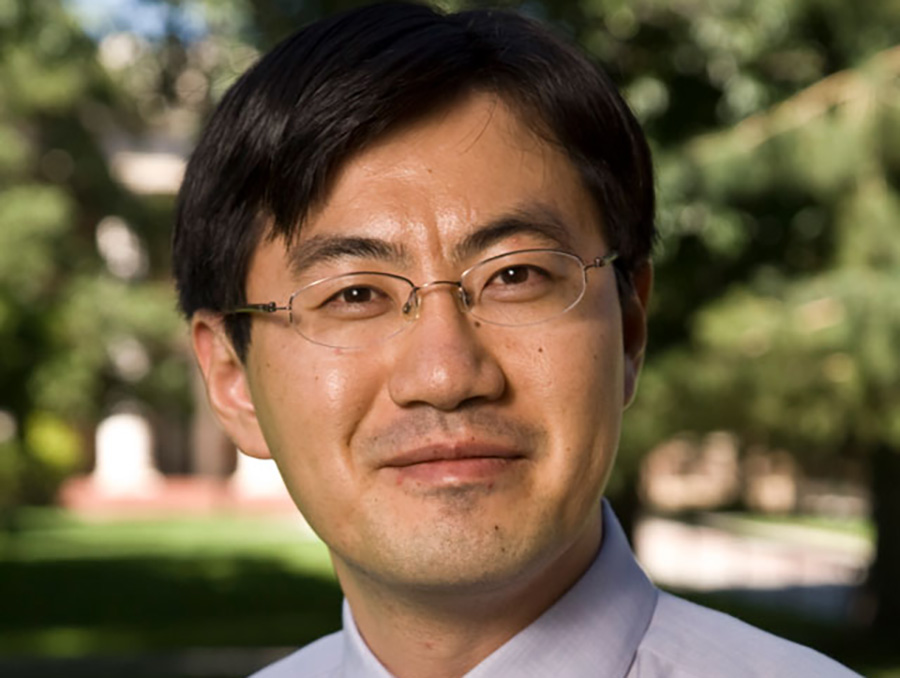University of Nevada, Reno Assistant Professor Jihwan Yoon is recognized with the prestigious CAREER Award, the National Science Foundation’s highest recognition in support of early-career faculty. Yoon works in the Department of Electrical & Biomedical Engineering in the College of Engineering. He serves as a mentor for undergraduate students involved in research and he is a member of committees for master’s and doctoral students.
The Faculty Early Career Development (CAREER) Program offers support of early-career faculty who have the potential to serve as academic role models in research and education.
Yoon’s CAREER Award project, supported by nearly $488,000 award from NSF and its Established Program to Stimulate Competitive Research (EPSCoR), focuses on understanding the limitations and finding solutions for nanosecond electrical pulses (NEPs), which have surfaced as a therapeutic approach to improve neurological disorders. NEPs have shown efficiency in stimulating cells and nerves without causing damage and have the possibility to be used on smaller portable devices, increasing accessibility to many. This project will also focus on developing a medical device prototype using NEPs.
“It’s always great to have another one of our faculty members receive this recognition and support for their research at this level,” Mridul Gautam, the University’s Vice President for Research and Innovation, said. “The investment from NSF and co-funding from the EPSCoR program helps build our research and education capacity, advances innovation, enriches K-12 STEM education and supports our workforce development efforts.”
Forty-nine University faculty members have received a CAREER Award since 1996. In 2021, a record number of eight CAREER awardees were named, and then seven were awarded in 2022. In 2023, there were three recipients, including Ying Yang from the Department of Chemistry, Lei Cao from the Mechanical Engineering Department, and Andrew Nuss from the Department of Agriculture, Veterinary and Rangeland Sciences.
Below, Yoon answers questions about his CAREER research, how he plans to integrate education and outreach into his project, his goals as a professor and his future career plans.
Can you describe the research your CAREER award will support?
This CAREER award project aims to develop novel therapeutic medical devices using Radio Frequency (RF) technology, specifically targeting neurological treatment with a wearable device. My research on RF-Nanosecond Pulse (RF-NEP) devices utilizes deep learning in conjunction with radar technology for specific targeting, anatomical compensation, enhancing tissue penetration, and inducing physiological-like stimulations.
What are the real-world implications of this research? What do you hope to achieve?
This device aims to treat novel neurological disorders by providing wearable, home-use alternatives to conventional therapies like TMS as well as pharmacological interventions. By directly delivering electric fields to targeted brain areas with enhanced efficiency, it enhances accessibility, patient compliance, and reduces dependency on neural logical drugs, offering an alternative treatment approach. Ultimately, this research seeks to shift the paradigm in neurological disorder treatment, emphasizing non-invasive, home-based care tailored to evolving patient needs and preferences.
What spurred this area of research for you? How has it evolved?
This research project evolved from my extensive exploration of Nanosecond Electrical Pulses (NEPs) in collaboration with the University of Nevada, Reno, School of Medicine. NEPs, known for their high intensity and extremely short pulse width, offer efficient and safe stimulation of excitable cells and nerves while minimizing tissue damage. However, a notable challenge in their application lies in their limited penetration depth, which struggles to effectively traverse into complex tissue structures. I discovered potential solutions from my engineering work in deep learning-based radar technology, which enhances penetration depth, targets pinpointing, and signal integrity maintenance through deep learning integration. The convergence of these two projects results in a novel biotechnology with promising potential.
How are you planning to integrate education and outreach into your CAREER project?
The project aims to enrich STEM education and engagement, with a particular focus on K-12 students, through the development of educational modules centered on electromagnetic wave propagation and signals for health scanning. Collaboration with Sierra Nevada Journeys for Family Science Night programs is intended to acquaint students with the practical applications of science and engineering. Alongside graduate students, my lab offers many undergraduate research opportunities in the fields of biomedical engineering, RF, radar, and deep learning, providing a broad range of students with valuable involvement in the project.
How do you hope to impact your students’ lives and futures as scientists?
This project started with a long collaboration with professors in the medical field (Drs. Gale, Leblanc, Gould and El Zaklit). By merging diverse fields such as engineering and medical science, this project serves as an excellent model for interdisciplinary study, equipping students with the knowledge and perspective needed to drive future healthcare innovations. My goal is to inspire students to apply science and engineering in meaningful ways, shaping their future as leaders in technology and medicine.
What’s next for you, your research, and your career?
As we advance the development of our technology, we will prioritize thorough testing and validation to ensure its effectiveness and safety. Our commitment to extensive trials, inclusive of a diverse participant pool, is critical for verifying the performance of this technology in real-world healthcare settings. Furthermore, we will continuously effort to bridge the engineering and medical communities, promoting a synergy that accelerates the rapid transition of innovative engineering concepts into medical treatments.
In preparing his proposal, Yoon used proposal planning and review services provided by Research & Proposal Development Services, part of Research & Innovation. For proposal submission assistance, submit a request for research development services.















